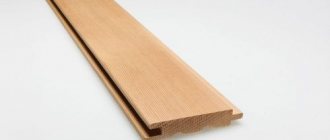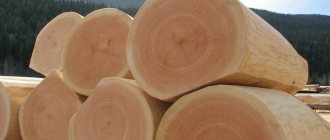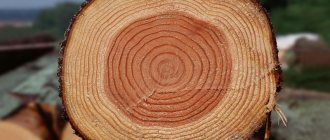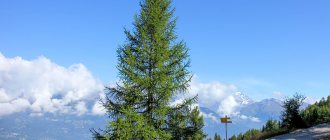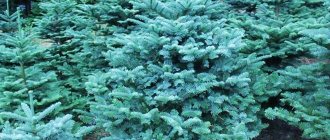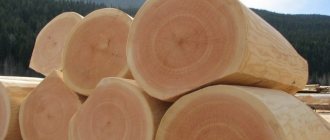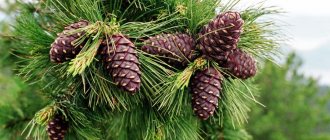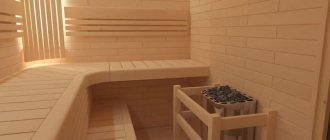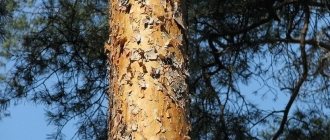Homeland of Siberian cedar: Western Siberia, Eastern Siberia, the Urals, also grows in Mongolia and Northern China Lighting: shade-tolerant The soil: well-drained, light in mechanical composition, moist sandy loam and loamy Watering: during the dry period, abundant watering is required, periodic spraying of the crown of young trees is advisable Maximum tree height: 45 m Average lifespan of a tree: 500-800 years Landing: seeds, seedlings
Description
Cedar pine comes from Siberian forests. It occupies a special place in the life of a Russian person. The height reaches 35-40 m with a trunk diameter of up to 0.5 m. There are giants with a trunk width of up to 2 m.
Cedar pine (Pinus) and cedar (Cedrus) are often confused. These are different trees that belong to the same Pine family. Cedar does not grow in the climatic conditions of the middle zone.
The two cultures are similar to each other, but there are significant differences between cedar and pine, in particular in the needles. Cedar pine needles are 10-20 cm long and are arranged in bunches of 5 pieces. In cross-section they have a triangular cross-section.
The average lifespan of a cedar pine reaches 400 years. There are long-livers up to 8 centuries.
Flowering begins in May-June. The cones ripen only in the second year and fall off along with the seeds. Cedar pine is a monoecious plant that produces male and female cones. The first are represented by yellow stripes in the center of the shoots. Female cones form on the edges of branches near the apical bud.
There are several varieties of cedar pine that are found in nature:
- Siberian (Pinus sibirica);
- European (Pinus cembra);
- Korean (Pinus koraiensis);
- Elf tree (Pinus pumila).
The Siberian cedar pine stands out for its dense compact crown. The needles are thin, narrow, their length is 10-13 cm. It has medicinal properties, as it contains unique components (vitamin C, amino acids, iron, essential oils).
It is believed that the air of the cedar forest has a healing effect. The needles secrete special phytoncides, which are a significant barrier to bacteria and viruses.
Pine resin is called oleoresin because of its healing properties. Wood also has bactericidal properties. The fruits of cedar pine are also valuable. Nuts are a nutritious healing product.
Siberian pine in culture
- In ancient Novgorod, drinking ladles, tubs, tubs and other household items were made from Siberian pine. It was believed that food and drinks stored in dishes made from this tree acquired nutritional power and prolonged life.
- Researcher and traveler Nikolai Przhevalsky said that when Siberians gathered on long winter evenings, they loved pine nuts. They clicked them most often in complete silence. This is called conducting a “Siberian conversation”.
- And an expert on Siberian forests, local historian and naturalist Vasily Dmitriev wrote in the article “Siberian cedar” in 1818:
| “Glory to the places that the sun loves, be proud, the heights of Lebanon, of your cedars: not having seen you in my homeland, on the land belonging to Russia, I have no right to dignify you, but in my eyes the shady cedar of rich Siberia will not yield to you in his beauty and you will replace me. What majesty is in the bearing of this tree, what a sacred shadow in the density of its forests! " Original text (Russian) “Glorify, places beloved by the sun, be proud, Lebanese heights, of your cedars: not seeing you in my fatherland on Matera, the land of Russia belongs, and I don’t dare to dignify you, but in my eyes the shady cedar of rich Siberia is not yield to you in my beauty and I will replace you. What majesty is in the bearing of this tree, what a sacred shadow in its dense forests! " |
- The cedar taiga was described by Ivan Bagryany in the novel “Tigrolovi” (from 1932 to 1937 he served exile in the camps of the Far East):
| “Forty-meter cedars, having outstripped everyone in the competition towards the sun, were driven with red, bare trunks from the lower chaos away, where they covered the sky with their crowns. There the sun walked over them and white clouds floated above them. Following the cedars stretched huge aspens and other leafing giants, which, being lower than the cedars, created the second tier. Then tall hazel, prickly nut, spruce, here and there birch trees, birch bark, bird cherry, intertwined with vines of wild grapes and bindweed, went up the third tier. And below - in the fourth tier - there is complete chaos. In some places, ordinary hazel is thick, like a brush, with tall grasses and weeds. Trees felled lengthwise and crosswise, like giants on a battlefield, rotted and not yet decayed, some with through holes-hollows, like the muzzles of unprecedented cannons, others with the entire system of roots inverted, holding it edge-on, like walls, or like giant handfuls of stones with their fingers squeezed between their fingers. and the earth." |
Spreading
Under natural conditions, cedar pine grows in many forests in Russia (Khabarovsk Territory, Siberian District, Primorye). Pines are also grown in the Moscow region, Leningrad region, in the Far Eastern region, Siberia, the Urals and Altai.
The tree feels great in any region with a temperate climate, since it is not the weather that matters for the crop, but the composition of the soil.
To obtain beautiful, powerful Siberian pine trees, you need to plant young seedlings in fertile soil, actively water and feed them. When grown in gardens and on city streets, the fruiting period is accelerated by 2-3 times. Under natural conditions, pine begins to bear fruit only at 40-50 years of age with an interval of 5-8 years; artificially, humans can shorten this period by 2-3 times.
origin of name
Researchers suggest that the second common name - Siberian cedar - was given to Siberian pine by Russian pioneers who explored Siberia in the 15th century and first encountered this tree. They called an unfamiliar pine tree with large nuts in cones, not like spruce, fir, or larch, Siberian cedar, because it reminded them of the sacred Lebanese cedar, which is mentioned in the Bible. Here's how Russian scientist Fedor Keppen writes about it:
| “It is more likely that the Cossacks who came to the Urals, fascinated by the sight of a wonderful coniferous tree, still unknown to them, gave it at random the name of the glorious cedar, which they knew about only by hearsay.” Original text (Russian) “It is more likely that the Cossacks who came to the Urals, Fascinated by the sight of a beautiful coniferous tree, hitherto unknown to them, gave it at random the name of the glorious cedar, which they knew only by hearsay.” |
Planting and care
In order for the Siberian pine pine to grow well, it is important to choose the right site. It must meet the following criteria:
- the place should be bright and open, but for the first 10 years the young tree will need to be shaded;
- maintain a distance of at least 8 m between seedlings;
- in the area where it is planned to grow cedar pine, there must be clay soil fertilized with organic substances.
The hole for planting is dug 2 times more than the roots of the seedling with a ball of earth. At the bottom, a drainage layer of 10-12 cm is organized. The circle around the trunk is watered abundantly with water (consumption per 1 plant - 5 l) and a support is installed to tie up the young tree.
When caring, follow simple rules:
- the soil around the trunk is carefully loosened, since the roots are located on top;
- In the first years, seedlings are watered, as the plant is sensitive to lack of moisture;
- feed the tree only every other year, apply fertilizers in the summer months;
- When weeding, weeds are not thrown away; they are used as additional fertilizer.
Trim as necessary. They do not specifically engage in formative pruning unless this is indicated in the manufacturer’s recommendations.
Reproduction
This plant can be propagated in two ways: by nuts and vegetatively. In the latter case, grafting onto ordinary pine is used. But most often the seed method is chosen for propagation.
When planted with seeds under artificial conditions, fruiting begins in the 20th year. When grafting is performed, the harvest is harvested after 7-10 years.
Cedar pine seeds lose their viability very quickly. They need to be planted immediately after harvesting: in late September - early October.
When sowing in spring, seeds require mandatory stratification. It consists of several stages.
- Planting material is immersed in warm water (25-30 °C) for 4-6 days. Every day they drain and pour new water.
- The prepared seeds are mixed with peat chips or river sand. The mixture is left, stirred periodically and moistened. Keep containers at room temperature.
After 50-60 days, the seeds will sprout and can be planted in a permanent place. Choose a bed with light, loose soil. In the second year, seedlings can be planted.
Cedar oil
Cedar oil is obtained by two methods: extraction and pressing. The oil contains many substances: vitamins A, B1, B2, B3 (PP), B6, D, E, F. It is used in the treatment of various diseases: laryngitis, acute respiratory infections, flu, colds, psoriasis and other skin diseases, also for the treatment of various gastrointestinal ulcers and has a beneficial effect on various allergic disorders. In addition, the oil has a general strengthening effect, helps eliminate chronic fatigue syndrome, and increases physical and mental performance.
Diseases and pests
The main enemy of cedar pine is the bark beetle. The pest is activated immediately after warming, it drills holes in the wood under the bark. The insect can be dealt with only when the first signs appear. Its settlement is evidenced by small holes in the bark filled with resin.
Another dangerous enemy is Siberian hermes. The principle of the insect's effect on plants is reminiscent of aphids - it sucks out the juices of young and mature trees. Fibrous growths on the body of Hermes protect against external influences of poisons, this is the difficulty of the fight. But you can influence the pest with insecticides through the sap of the tree.
Most often, the crop is affected by pine rust. A sign is the appearance of orange bubbles on the needles, which gradually turn into powder (spores).
The most dangerous diseases for cedar pine are blister rust and shoot cancer. They are caused by a fungus and can only be cured at an early stage of the lesion.
Meaning and Application
Siberian pine is widely used for industrial purposes. Its wood is used in construction and making furniture.
Pine wood is very light. But they take into account that it is porous (easily absorbs moisture), so products made from such material cannot be used in rooms with high humidity.
Cedar pine wood is widely used for:
- external finishing;
- linings;
- stucco moldings;
- making patterns;
- turning;
- making furniture;
- making musical instruments.
It is a light brown material with a slight red tint that is easy to work with. When using pine products for finishing, the boards are pre-treated for sealing with water- or oil-based compounds.
Tree sap (resin) is used in medicine. Tannins present in cedar pine trees are used in the manufacture of leather. Vitamin flour made from pine needles is used in animal husbandry.
Nuts are a valuable food product. In the forest, many forest inhabitants use them as food. The shells are suitable as mulch.
Use in landscape design
Cedar pines are used for landscaping yards, parks, streets and private areas. There are several reasons for this. First of all, because of the beneficial properties of wood, as well as because of the opportunity to decorate the garden and area in winter.
The culture is combined with other plants: shrubs and flowers. Hydrangeas, roses, crocuses, and tulips grow beautifully next to the pine tree. The tree looks great as an accent plant near the doors of a house, hotel or any other building. When choosing a planting site, take into account high growth.
Pines are not used as hedges. It is necessary to maintain distance between individual plants. You also need to set aside distances from sidewalks, paths and communication systems, since wires can easily break the top in the wind.
Cedar pine has a wide range of useful properties. Phytoncides purify the air; wood is used to make furniture and carpentry tools. With proper care, the plant will delight several generations.
Cedar as a building material
In the construction of houses, cedar is used both for the construction of wooden houses from logs, where cedar acts as the main wall material, and for finishing the walls of stone houses with cedar lining. In the latter case, only the decorative properties of cedar wood and its aromatic qualities are used.
In the case of building a house from cedar logs, as well as a bathhouse, such a structure has a number of features.
According to its mechanical properties, Siberian cedar is between spruce and fir
, but this is enough to build houses several stories high and quite complex structures, especially considering that large-diameter cedar logs are used in construction. At the same time, a structure made of cedar will be superior to a structure made of spruce and fir due to the greater ability of Siberian cedar to resist moisture, as well as the lesser “desire” of insects to damage cedar wood. The comparison table can be viewed at the link.
At the same time Siberian cedar has a lower density than Scots pine or larch (435 kg/m3 versus 500 and 660, respectively). This means that cedar is warmer than pine and larch. By the way, “real” cedars have a density equal to or greater than that of Scots pine, which means they are not warmer than pine, only their wood has more decorative properties, and therefore is more suitable for finishing work. At the same time, Siberian cedar has the lowest shrinkage coefficient, that is, a log house made of cedar gives less shrinkage. Fewer cracks are formed during drying.
